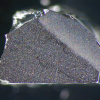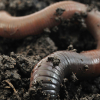Stanislav Strekopytov
Imaging and Analysis Centre, Natural History Museum, Cromwell Road, London SW7 5BD, UK. E-mail: [email protected]
The earliest record relating to the use of arsenic in the preservation of taxidermy specimens belongs to Wolfgang Helmherd Baron von Hohberg1 (1612–1688). However, it is the invention of arsenical soap by Jean-Baptiste Bécoeur in the mid-1700s and the publication of its recipe in 1800 that made arsenic a popular pesticide used in the collections, until it was phased out in the second half of the 20th century. Since 1770, alongside arsenic (often in a form of arsenical soap, arsenic trioxide, potassium arsenite or arsenic sulfide), mercury (as mercury chloride, also known as “corrosive sublimate”) was widely used in taxidermy, in herbaria and in the preservation of museum collections in general. Arsenic poisoning was recorded among both herbarium workers and taxidermists and fatal cases2 are known.
Few records exist with reference to the methods of preservation applied to the taxidermy specimens in heritage collections, including the use of pesticides to control any immediate or ongoing risk of infestation. Specimens would have been routinely treated with pesticides, and retreated as required.
Arsenic and mercury are still commonly identified in taxidermy and herbarium specimens in the museum collections using spot tests and, more recently, X-ray fluorescence (XRF) spectrometry. Spot tests are semi-quantitative at best. Tests for As have been reported to give false positives and false negatives,3 however, the method is generally found to be reliable,4 while a spot test for Hg is reported as being unsuitable for testing the collection materials.3 Arsine (AsH3), a gas more toxic than As(III) or As(V), present in the materials used for preservation treatment is formed during testing so that the use of a fume cupboard is required and the resulting waste needs to be treated as a hazardous material due to mercury present in the test paper. Handheld XRF is a useful non-destructive technique to screen the collections for elevated concentrations of toxic elements, however, due to the nature of specimens and heterogeneity of contaminant distribution the results should be considered to be qualitative.
There are several reasons why quantitative (rather than qualitative) information on trace metal concentrations in animal specimens preserved in museums is important:
- To better assess potential hazards existing in the collections and provide the necessary background information for risk assessing the activities of collection staff, visitors and contractors.
- For an informed decision to be made about whether an object is safe for handling by members of the public, for example, in “hands on” displays.
- Life science collections and their curated metadata are now seen as potential archives of environmental levels of trace elements.5 As a result, changes in metal concentrations, e.g., in feathers induced by conservation treatment has now become an important research subject.6
Quantitative analytical methods, such as atomic absorption spectroscopy (AAS), inductively coupled plasma optical emission spectroscopy (ICP-OES) and inductively coupled plasma mass spectrometry (ICP-MS) are seldom applied to the study of pesticide residues in natural history collections. This is likely to be due to the cost of instrumentation and the level of expertise involved, as well as a reluctance to apply a destructive sampling technique. However, the low detection limits and multi-elemental capabilities of modern techniques, e.g., ICP-MS, make destructive collection of small (1 mg or less) samples a practical alternative to non-destructive methods, especially when fully quantitative data collection is required or preferred.
The aim of the study discussed in this article is to provide quantitative background for the assessment of chemical safety of bird taxidermy specimens for use in learning centres and similar “hands on” displays.
Bird specimens
Eleven bird specimens (mounted birds, wings and a study skin) representing species widespread in the UK were selected for testing with a view of using them in educational displays. None of the bird specimens had associated with them any background information on the conservation methods used and only two specimens were dated. One or two feathers (see, for example, Figure 1) were collected from each specimen from areas most likely to be touched by visitors when the specimen is displayed, but having in mind minimising damage to the specimen. Feathers (0.6–11.5 mg) were weighed using an MC6 Sartorius microbalance (d = 0.001 mg).

Determination of As, Hg and Pb in feathers by ICP-MS
Feathers were transferred into 60 mL Savillex® fluoropolymer vessels, 2.5 mL HCl, 0.5 mL HNO3 and some ultra-pure water were added and the vessels heated at 70°C overnight. Samples were diluted with ultra-pure water to 50 mL and further diluted for ICP-MS analysis using 2% hydrochloric acid (HCl) when necessary. ICP-MS analysis was conducted using an Agilent 7700x instrument.
Inorganic mercury at low levels is not stable in HNO3 solutions without sufficient concentration of chloride ions, which is why HCl was selected as an acid matrix even though it can cause interferences with 75As due to the formation of 40Ar35Cl+. To minimise polyatomic interferences, the instrument was run with 5 mL min–1 He (99.9995% purity) in the collision-reaction octopole cell (CRC) as well as with no collision gas entering the CRC. Pb was determined in the “no gas” mode (average of 206Pb, 207Pb and 208Pb) while As (75As) and Hg (202Hg) were determined in the “He mode”. The limit of quantification (LOQ) for As in 2% HCl is only about 0.02 µg L–1 and the LOQ for Hg and Pb are less than 0.01 µg L–1 and 0.003 µg L–1, respectively. The actual method detection limits (per weight of the solid sample) depend on the dilution and the tailing of the signal due to the memory effects after higher concentrations, which is a very important factor for As and, especially, Hg determination.
Arsenic contamination
One of the mounted bird specimens analysed, a common kingfisher (Alcedo atthis) was found to contain up to 1.44% As in feathers. The chronic Minimal Risk Level7 (MRL) by ingestion is considered to be 0.0003 mg As kg–1 body weight and the acute MRL is 0.005 mg As kg–1 body weight, which means that only about 7 mg of these contaminated feathers would contain enough As to exceed the acute MRL for a 20 kg child. Scanning electron microscopy (SEM) with energy dispersive X-ray analysis (EDX) has shown that vanes and barbs of the feather are covered with particles containing As and Ca (see Figure 2), but As is also present in particle-free areas of the shaft.

Mercury contamination
Another bird specimen analysed, a wing of kestrel (Falco tinnunculus), was found to contain up to 1.85% Hg in feathers. The intense MRL7 by ingestion is considered to be 0.002 mg HgCl2 kg–1 body weight and the acute MRL is 0.007 mg HgCl2 kg–1 body weight, which means that a single feather weighing 8 mg would contain enough Hg to exceed the acute MRL for a 20 kg child. The same specimen was found to be contaminated with As (0.28%) and Pb (0.17%). A high concentration of Pb indicates that lead arsenate might have been used as one of the components (among other arsenic compounds) of the pesticide treatment.
Conclusions and risk assessment
The solution-based ICP-MS analysis provides fully quantitative information on bulk contents of toxic elements in taxidermy specimens. Using an ICP-MS equipped with a CRC allows the determination of a number of target elements simultaneously, including As and Hg, using a single digestion protocol. As this approach requires careful destructive sampling and is labour-intensive, it may not be the first method of choice for bulk assessment of chemical hazards in large collections, where non-destructive handheld XRF can be used in preference. However, unlike XRF or spot testing, the ICP-MS method gives quantitative bulk concentration of As and Hg, which is necessary to estimate the potential toxic element intake from contact with the specimen. This is invaluable when risk assessing the use of a specimen in “hands on” displays when the chemical risks should ideally be fully quantified and compared with respective MRLs. In assessing chemical risk for children, behavioural factors must also be considered. The normal hand to mouth activity of young children may result in an increase in toxic metal intake from pesticide particles potentially present at the surface of taxidermy specimens. The combination of ICP-MS with SEM-EDX analysis can also reveal not only the level of pesticide contamination, but what compounds were likely to be used and so help to put taxidermy objects with unknown or unclear history into context.
The inherent level of As and Hg in bird feathers can be used to assess whether the specimen has been treated with pesticides or cross-contaminated from other specimens in the collection. This can be estimated as below 10 µg g–1 As and 25 µg g–1 Hg.8 The specimens containing less than 15 µg g–1 As and less than 100 µg g–1 Hg (seven out of eleven specimens tested) are considered by us as either having natural levels of these metals or slightly elevated levels due to cross-contamination, but safe to handle (only with respect to toxic metals as we have not done testing for organic pesticides) and specimens containing more than 1000 µg g–1 (0.1%) of either metal (two specimens) are treated as hazardous. Two more specimens were found to have elevated levels of As (between 100 µg g–1 and 1000 µg g–1) and are not recommended for using in “hands on” displays.
References
- W.H. von Hohberg, Georgica curiosa. Nürnberg (1682).
- C.W. Albrecht, “Arsenic and old collections”, Local History Notebook (Ohio Historical Society) 9(2), i–v (1993).
- C. Found and K. Helwig, “The reliability of spot tests for the detection of arsenic and mercury in natural history collections: a case study”, Collection Forum 11(1), 6–15 (1995).
- F. Marte, A. Péquignot and D.W. Von Endt, “Arsenic in taxidermy collections: history, detection, and management”, Collection Forum 21(1–2), 143–150 (2006).
- A.L. Bond, K.A. Hobson and B.A. Branfireun, “Rapidly increasing methyl mercury in endangered ivory gull (Pagophila eburnea) feathers over a 130 year record”, Proc. Roy. Soc. B 282, 20150032 (2015). doi: http://dx.doi.org/10.1098/rspb.2015.0032
- O. Hogstad, T. Nygård, P. Gätzschmann, S. Lierhagen and P.G. Thingstad, “Bird skins in museum collections: are they suitable as indicators of environmental metal load after conservation procedures?”, Environ. Monit. Assess. 87, 47–56 (2003). doi: http://dx.doi.org/10.1023/A:1024485829174
- Agency for Toxic Substances and Disease Registry, Minimal Risk Levels (MRLs) for Hazardous Substances (2014). http://www.atsdr.cdc.gov/mrls/mrllist.asp
- P. Cross and N. Odegaard, “The inherent levels of arsenic and mercury in artifact materials”, Collection Forum 23(1–2), 23–35 (2010).










